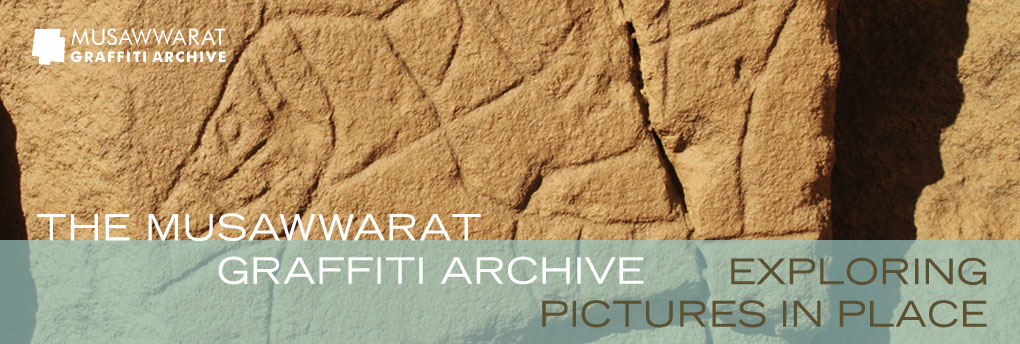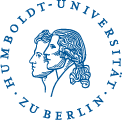Inscriptions
The first category of the Musawwarat graffiti corpus comprises recognisable writing dating to the time the Great Enclosure was in use. These graffiti include Meroitic cursive script, such as numerous invocations addressed to Apedemak, as well as the southernmost known Latin inscription (CIL III 83) on the African continent. The latter inscription seems to point to diplomatic and/or commercial contacts between Rome and Meroe in the last years of the Meroitic realm. Inscriptions in Old Nubian, Greek and Arabic languages date to the Christian Medieval (c. AD 550-1500) and later periods. They illustrate the (re-)use and appropriation of the site after its original function(s) may have been but a distant memory or entirely forgotten.
A number of much younger inscriptional graffiti chronicle the scientific and touristic exploration of the Middle Nile Valley over the past 200 years. They include early inscriptions by Linant de Bellefonds (1822), Cailliaud (1822) and the Royal Prussian Expedition (1844) (Wenig 2009). Most recently, tourists have continued the ‘tradition’ of graffiti making at the site by adding their own name and date inscriptions, often destroying ancient graffiti in the process. Apart from accelerating surface erosion due to weathering and shadow-seeking domestic animals, modern tourists’ inscriptions are among the greatest dangers to the preservation of the ancient graffiti of Musawwarat.
Text: Cornelia Kleinitz (2014)






